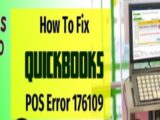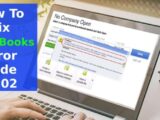QuickBooks for Year End

How To Preparing Your QuickBooks for Year End
The process of closing your books after your fiscal year has ended shouldn’t start in January or February of the next year. You should begin getting your books ready beginning in September or October of the year you are about to close. Starting early will allow you time to find any mistakes that have been made throughout the year. Just as important beginning early will allow you time to correct any mistakes that were made throughout year.
If you wait until the last minute to start your “cleanup” process it could cost you more time and money in the end. For example I had a new client who didn’t do anything to prepare for the year end closing process. Some of their vendors did not provide them with a Tax ID number for 1099 reporting purposes, and they had inter-company transactions that were not properly accounted for. They ended up with a huge bill from their CPA firm because the CPA firm had to complete all of the above mentioned items before they could prepare their tax returns. Even QuickBooks Support help will work for you Year-End preparation just dial toll free number PrinterSupport365
It’s a good idea to hire a part-time bookkeeper or accountant to help with reconciling your books on a monthly or quarterly basis. You can avoid high CPA fees by doing this.
If you would like to prepare your own books for yearend I have some tips for you:
1.Go through the reports menu in QuickBooks and print off a Detailed Income Statement for the year. If you will be doing this in October for example print the report from January to September so you will have year-to-date information. Review this report to make sure you have captured all your expenses and income. You may have to put some expenses in different categories if they have been misclassified.
2.Print a year to date Detailed Balance Sheet from the reports menu. Reviewing your Balance Sheet will allow you to make sure you have included all your fixed assets, that your bank accounts are accurate, allow you an opportunity to review your Accounts Receivable and Accounts Payable balances, and more.
3.Print a Customer Balance Detail report to review your Accounts Receivable in detail. This will be a great opportunity before the end of the year rolls around to make some collection calls and increase your cash flow by receiving payments from your customers.
4.Print a Vendor Balance Detail report to review your Accounts Payable in detail. When it comes to paying bills always take advantage of the payment terms offered by your Vendors and hopefully this will increase your cash flow.
5.If you have an interest bearing bank account make sure all the interest income has been entered into QuickBooks. This is a process that can also be done through the “reconciliation” feature when reconciling your bank statements.
6.Review major purchases to see if any of these items should be classified as a Fixed Asset or remain a normal expense. You can check out the IRS web site to lookup the threshold rules surrounding Capital Expenditures www.irs.gov. Or check with your accountant. It was anything over $500 was classified as a Fixed Asset.
7.There are some accounts that should be reconciled depending on which industry you’re in. For example if you are a property management company you may want to reconcile your Tenant Security Deposit account making sure the balance on your Balance Sheet matches the balance you have in your Tenant Security Deposit Bank Account. If you are a contractor or construction company you may want to complete progress billing prior to year end. If you have a business that carries inventory you will want to complete an inventory analysis to see if you have to go back to previous months and make inventory adjustments.
8.Be sure to keep good records of your receipts that will help you verify information should you have to go back to previous months.
9.Be sure that before you pay a new vendor you have them complete a form providing you with their legal business name, tax ID number, and current address. This information should be entered into QuickBooks prior to paying any invoices to vendors. Having this process in place will save you time at the end of the year from having to track down Vendors you will only use once or twice. Get checked with QuickBooks Payroll Contact Number whether all dedications filled successfully.
10. If you have employees and don’t use the services of an outside payroll company you should also review your payroll information. You don’t want to send incorrect W-2 information to your employees.
These tips above should help you with completing your Year End Process.



